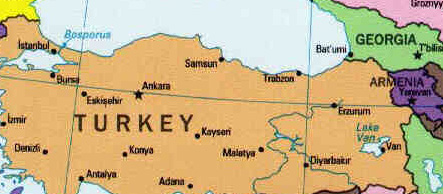
If I’ve learned anything about Armenia, it’s that people here know how to dress up. On any given night, Yerevan’s main opera square looks like a fashion show: beautiful women and handsome men are dressed up and are struting about, arm in arm.
Until recently I had no idea how much clothing cost here, or even where it came from. A few days ago I went on a Kiva borrower visit in a clothing market in central Yerevan. Aram, a loan officer from the micro-credit organization SEF World Vision invited me to come along.
We enter the market wiggling our way through the dense crowd, trying to track down a seller named Garine. While Aram effortlessly veers through the tight stalls, I do my best to keep up. The market is packed to the brim with buyers: the school year will soon begin in Armenia and parents are buying new clothes for their children. As we walk, Aram explains that vendors here regularly travel to Turkey to buy clothes at wholesale prices and bring them back to Armenia.
Turkey and Armenia have had a closed border since 1989. Still, Istanbul houses the only large clothing markets in the region. We soon find Garine, a warm and cheerful woman in her 30’s. She, like many other vendors here, has taken out a Kiva loan to buy clothes in Turkey. She tells me how she makes a two-day bus journey from Yerevan to Istanbul by going all the way north through Batumi in Georgia.
She makes this four-day round trip journey once a month, which takes time away from her shop and her two kids. She says that when she gets back to Armenia, she must pay hefty customs taxes on the clothes she brings into the country. All this adds up, and the going price for a pair of new jeans in Armenia is around $25. Still, she says that the Kiva loan has helped her buy more goods during her recent trips, which translates into more income to support her family.
Micro-finance is undoubtedly helping many small-scale Armenian entrepreneurs like Garine make a better living by giving them capital to buy more goods. Still, much of the money is being spent outside of Armenia. Micro-credit, when coupled with open trade relations with neighboring countries, has the potential to create more jobs and vastly improve Armenia’s economy.
PREVIOUS ARTICLE
Poverty and Paroxysm: an International Day of Peace Post →NEXT ARTICLE
XacBank provides youth financial education and savings accounts →















